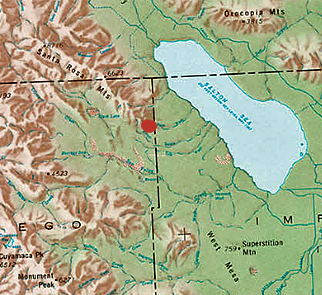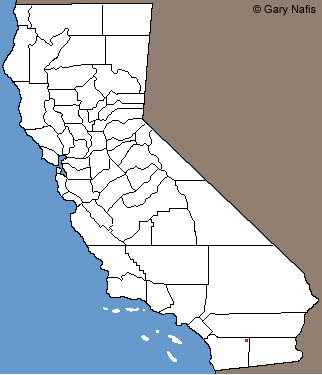 Red:
Red: Close-up of Range in California
|
 |
| Adult, San Diego County |
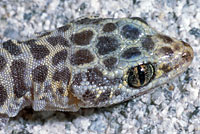 |
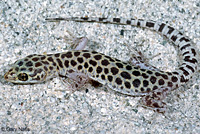 |
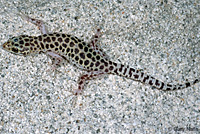 |
| |
Adult, San Diego County |
|
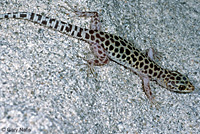 |
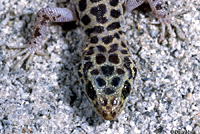 |
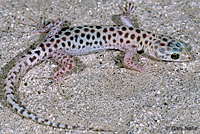 |
| Adult, San Diego County |
Adult, San Diego County |
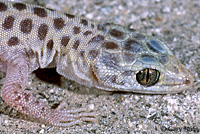 |
 |
| |
Adult, San Diego County |
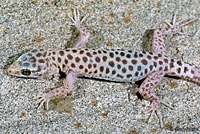 |
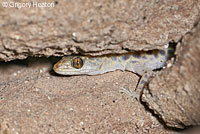 |
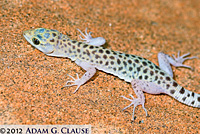 |
| Adult, San Diego County |
Adult in sandstone crevice, San Diego County © Grigory Heaton |
Adult, San Diego County
© Adam G. Clause
Animal captured and handled under state Scientific Collecting Permit and released at point of capture. |
| |
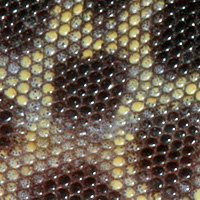 |
|
| |
The Night Lizards, genus Xantusia, have small granular scales on soft skin.
Xantusia henshawi is shown here.
|
|
| |
|
|
| Habitat |
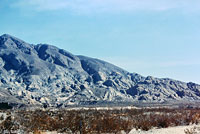 |
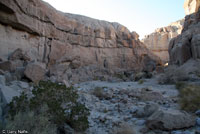 |
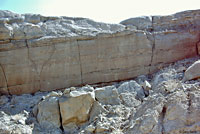 |
Habitat from a distance,
San Diego County |
Habitat, San Diego County |
Habitat, San Diego County |
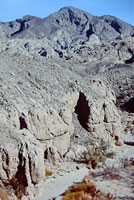 |
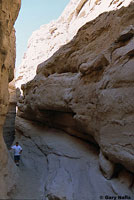 |
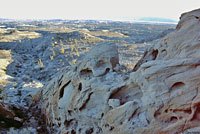 |
| Habitat, San Diego County |
Habitat, San Diego County |
Habitat, San Diego County |
| |
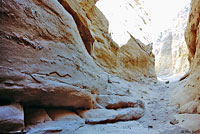 |
|
| |
Habitat, San Diego County |
|
|
|
|
| Description |
| |
| Size |
2.0 - 2.8 inches long from snout to vent (5.0 - 7.0 cm). (Lemm 2006)
|
| Appearance |
A small flat-bodied lizard with a flattened head, soft skin with fine granular scales, a long thin tail, lidless eyes with vertical pupils, and gular folds.
Similar to and closely related to Xantusia henshawi, but with a narrower head, a body that is shorter between the limbs, and with thinner limbs. |
| Color and Pattern |
The color is white to yellowish, with large dark brown spots on the upper surfaces, and irregular spots and bands on the tail. This species does not exhibit the light and dark phases seen in X. henshawi. It looks more like the light phase of that species but with more light coloring and smaller dark spots.
The underside is white with minute black speckling only on the forepart |
| Male / Female Differences |
Males have enlarged femoral pores.
|
| Life History and Behavior |
Activity |
Natural history is not well known.
Nocturnal, taking refuge during the day under exfoliating slabs of sandstone, in cracks, and in rodent burrows dug into the sandstone.
More strictly nocturnal than X. henshawi.
Probably active from spring to fall, taking cover during winter.
More terrestrial and less restricted to climbing rocks than X. henshawi.
This species probably developed a more slender body than X. henshawi to allow it to better exploit the wide range of microhabitats found in its sandstone habitat. |
| Defense |
Wary and secretive. Capable of running quickly for short distances to escape.
The tail can break off easily, but it will grow back.
The detached tail wriggles on the ground which can distract a predator from the body of the lizard allowing it time to escape.
More information about tail loss and regeneration. |
| Diet and Feeding |
Diet is not well known but probably is similar to that of X. henshawi, consisting of small invertebrates such as ants, beetles, and bees. Captive individuals have been observed eating the eggs of Leaf-toed Geckos.
One Sandstone night lizard was observed emerging from a crevice at night to prey on various invertebrates, retreating to the crevice after each strike. (Herpetological Review 46(1), 2015) |
| Reproduction |
Reproduction is not well known but breeding probably occurs in May and June with live young born in September.
|
| Habitat |
Inhabits a very small area of sandstone and mudstone.
|
| Geographical Range |
| Endemic to California. Occurs only in the Truckhaven Rocks area of San Diego County, in Anza-Borrego State Park. |
| Elevational Range |
From 790 - 1,000 ft. (240 - 305 m).
|
| Notes on Taxonomy |
In 1986 Grismer and Galvan published the first description of this species, classifying it a subspecies of Xantusia henshawi - Xantusia henshawi gracilis - Sandstone Night Lizard. It was elevated to a full species in 2001 by Lovich (2001 Herpetologica 57(4): 470-487).
---------------------------------------------------------------------------------------------------------------------------------------------------------------------
"The standard English name for this clade has been changed (by adding “Northern”), following Bezy (2019, Night Lizards, Eco Herpetological Publishing), to eliminate redundancy with the English name of the clade Xantusiidae."
(Nicholson, K. E. (ed.). 2025 SSAR Scientific and Standard English Names List)
---------------------------------------------------------------------------------------------------------------------------------------------------------------------
Alternate and Previous Names (Synonyms)
Xantusia henshawi gracilis - Sandstone Night Lizard (Stebbins 2003)
|
| Conservation Issues (Conservation Status) |
| Protected from collection by the state and the federal government and by the fact that its known range falls completely within the boundaries of Anza-Borrego State Park where it is also protected. |
|
|
Taxonomy |
| Family |
Xantusiidae |
Night Lizards |
Baird, 1858 |
| Genus |
Xantusia |
Northern Night Lizards |
Baird, 1859 “1858” |
Species
|
gracilis |
Sandstone Night Lizard |
Grismer and Galvan, 1986 |
|
Original Description |
Xantusia henshawi gracilis - Grismer and Galvan, 1986.
from Original Description Citations for the Reptiles and Amphibians of North America © Ellin Beltz
|
|
Meaning of the Scientific Name |
Xantusia - honors Xantus, John
gracilis - Latin = slender - referring to the body shape.
from Scientific and Common Names of the Reptiles and Amphibians of North America - Explained © Ellin Beltz
|
|
Related or Similar California Lizards |
X. henshawi - Granite Night Lizard
X. r. reticulata - San Clemente Night Lizard
X. vigilis - Yucca Night Lizard
X. sierrae - Sierra Night Lizard
X. wigginsi - Baja California Night Lizard
|
|
More Information and References |
California Department of Fish and Wildlife
Grismer, L. L., and M. A. Galvan. 1986. A new night lizard (Xantusia henshawi) from a sandstone habitat in San Diego County, California. Trans. San Diego Soc. Nat. Hist. 21(10):155-165.
Robert L. Bezy. Night Lizards: Field Memoirs and a Summary of the Xantusiidae. ECO Herpetological Publishing & Distribution. 2019.
Hansen, Robert W. and Shedd, Jackson D. California Amphibians and Reptiles. (Princeton Field Guides.) Princeton University Press, 2025.
Stebbins, Robert C., and McGinnis, Samuel M. Field Guide to Amphibians and Reptiles of California: Revised Edition (California Natural History Guides) University of California Press, 2012.
Stebbins, Robert C. California Amphibians and Reptiles. The University of California Press, 1972.
Flaxington, William C. Amphibians and Reptiles of California: Field Observations, Distribution, and Natural History. Fieldnotes Press, Anaheim, California, 2021.
Nicholson, K. E. (ed.). 2025. Scientific and Standard English Names of Amphibians and Reptiles of North America North of Mexico, with Comments Regarding Confidence in Our Understanding. Ninth Edition. Society for the Study of Amphibians and Reptiles. [SSAR] 87pp.
Stebbins, Robert C. A Field Guide to Western Reptiles and Amphibians. 3rd Edition. Houghton Mifflin Company, 2003.
Lemm, Jeffrey. Field Guide to Amphibians and Reptiles of the San Diego Region (California Natural History Guides). University of California Press, 2006.
Bartlett, R. D. & Patricia P. Bartlett. Guide and Reference to the Turtles and Lizards of Western North America (North of Mexico) and Hawaii. University Press of Florida, 2009.
Jones, Lawrence, Rob Lovich, editors. Lizards of the American Southwest: A Photographic Field Guide. Rio Nuevo Publishers, 2009.
Smith, Hobart M. Handbook of Lizards, Lizards of the United States and of Canada. Cornell University Press, 1946.
Taylor, Emily. California Lizards and How to Find Them. Heyday, Berkeley, California. 2025.
|
|
|
The following conservation status listings for this animal are taken from the July 2025 State of California Special Animals List and the July 2025 Federally Listed Endangered and Threatened Animals of California list (unless indicated otherwise below.) Both lists are produced by multiple agencies every year, and sometimes more than once per year, so the conservation status listing information found below might not be from the most recent lists, but they don't change a great deal from year to year.. To make sure you are seeing the most recent listings, go to this California Department of Fish and Wildlife web page where you can search for and download both lists:
https://www.wildlife.ca.gov/Data/CNDDB/Plants-and-Animals.
A detailed explanation of the meaning of the status listing symbols can be found at the beginning of the two lists. For quick reference, I have included them on my Special Status Information page.
If no status is listed here, the animal is not included on either list. This most likely indicates that there are no serious conservation concerns for the animal. To find out more about an animal's status you can also go to the NatureServe and IUCN websites to check their rankings.
Check the current California Department of Fish and Wildlife sport fishing regulations to find out if this animal can be legally pursued and handled or collected with possession of a current fishing license. You can also look at the summary of the sport fishing regulations as they apply only to reptiles and amphibians that has been made for this website.
|
| Organization |
Status Listing |
Notes |
| NatureServe Global Ranking |
G1 |
Critically Imperiled |
| NatureServe State Ranking |
S2 |
imperiled
|
| U.S. Endangered Species Act (ESA) |
None |
|
| California Endangered Species Act (CESA) |
None |
|
| California Department of Fish and Wildlife |
SSC |
Species of Special Concern |
| Bureau of Land Management |
None |
|
| USDA Forest Service |
None |
|
| IUCN |
VU |
Vulnerable |
|
|






















